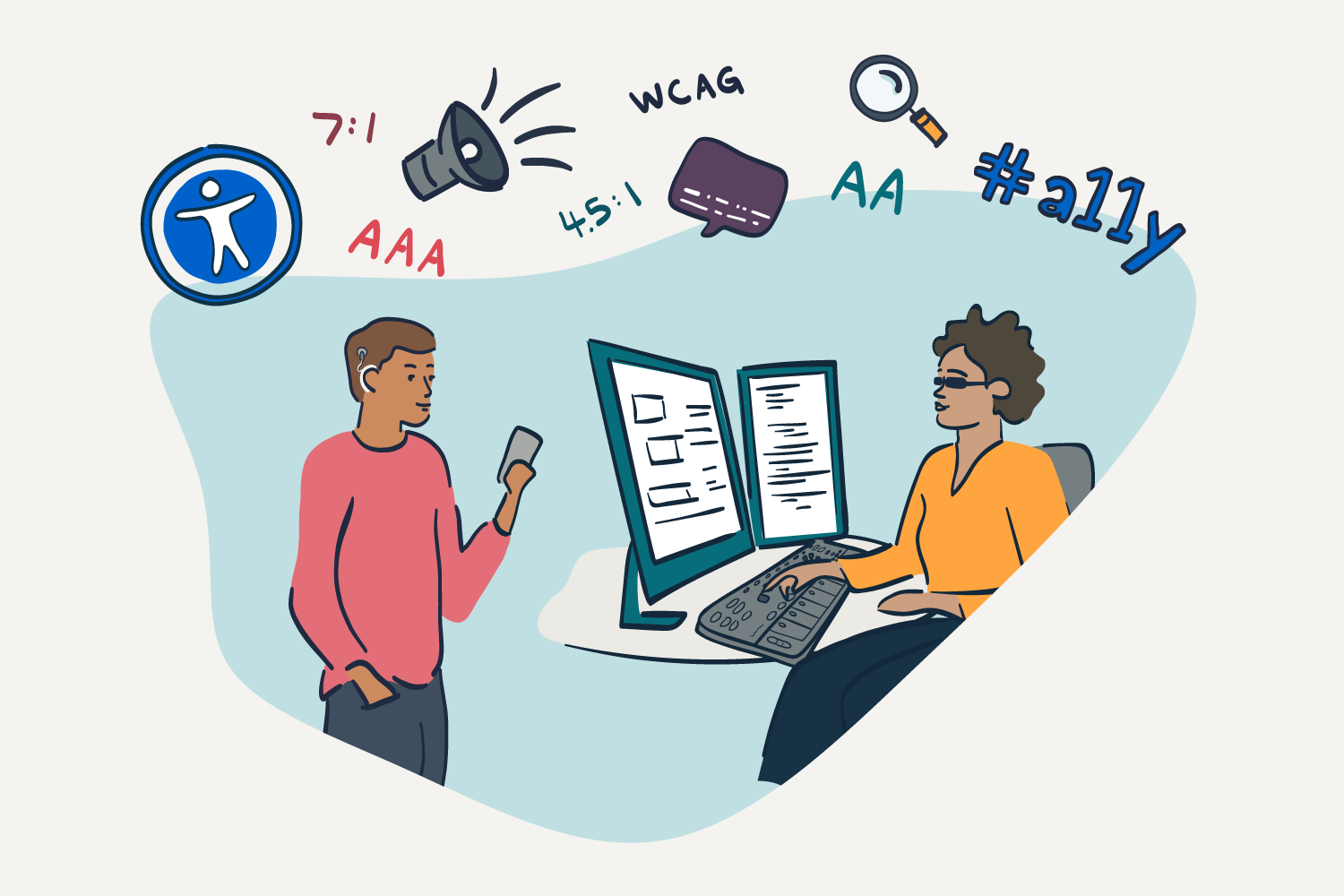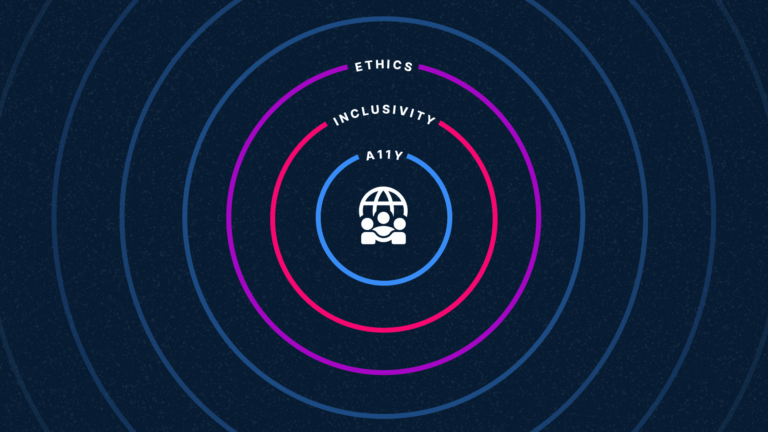How to create an accessible organization

More and more, companies are realizing just how important it is to develop a culture centered around accessibility. Companies see the many business benefits, including how accessibility can bolster employees by creating a more inclusive workspace. Making your organization more accessibility focused can be a challenge, especially when you don’t have an expert on your team to lead the charge. Fear not, because we have helped a lot of companies establish a process, best practices, and a culture of accessibility—all without breaking a sweat.
These are the steps you can take to start building a culture of accessibility awareness, support, and implementation at your company.
Assemble the Accessibility Team
The first step you can take is to assemble a team of people—or even a single advocate to start—who are passionate about accessibility. This team can include anyone from developers and designers to managers and sales representatives, so long as they are interested in creating a more accessible experience for everyone. Don’t worry about the depth of each person’s knowledge; everyone will grow as the team works together to establish itself.
Each person on the team should fully understand how accessible practices affect their role. Designers should know that they are responsible for designing accessible visual assets and flows, and developers are responsible for building these products in an accessible way. Project or Account Managers might be responsible for communicating how accessibility fits into the scope of work as well as making sure estimates factor it in. Others in customer experience or team and project leadership roles should understand how accessible practices affect the happiness and productivity of those who use digital tools, not to mention the increased brand perception of your entire company.
Get Support from Leadership
Once you have a team assembled (or a designated individual), you should consider getting support from your organization’s leadership team. In many cases, this won’t be as difficult as it may seem. To help in this effort, we have compiled some information about the business benefits of accessibility. Making the case for accessibility can save time and money, and that can be a compelling entry point for Leadership buy in.
Getting Leadership support is critical, because more often than not, decisions made at a higher level trickle down and impact accessibility. By getting your leadership team involved, you can ensure that all of your hard work does not go to waste.
Learn the Basics of Accessibility
Before your team can truly be successful, it is important to make sure your knowledge is aligned. Take some time to ensure everybody understands the basics of accessibility and how to test for compliance. This should include knowing the difference between standards such as WCAG and Section 508. Lunch and learns, workshops, and attending accessibility-focused conferences are all great ways to help quickly bring everyone up to speed.
There are also a lot of great online courses such as W3C’s Introduction to Web Accessibility and Google’s Web Accessibility Course that will help quickly bring everyone up to speed on the basics of accessibility.
Once you have these concepts down, it also helps to practice using screen readers. Knowing how someone uses assistive technology is crucial to ensure that the way you are testing your products is consistent with how someone would actually interact with it in the real world.
Define your Core Values and Create Documentation
Now that your team has a firm grasp on the basics of accessibility and the standards around compliance, take some time to decide what your core values are. For example, at Think Company, our core values for accessibility revolve around creating inclusive, safe, and universal experiences for everyone. Your core values are what help steer your accessibility decisions in the appropriate direction
Make sure that you have a proper space to keep all of your documentation, and make sure that space is easily accessible and available to everyone. Along with your core values, you should include a list of best practices that your team follows, clear definitions of who is responsible for accessibility (that’s easy, it is everyone!), and an outline for how each role should go about ensuring accessibility.
By making this information available to everyone, you make it really easy for others to follow in your footsteps.
Perform an Accessibility Self-Audit
The last (and arguably most important) task is to take everything your team has learned and apply it in the form of a self audit. Don’t limit your analysis to your digital products—look at the tools your teams use and even your physical work environments. Having a broader emphasis on accessibility will really help cement it at the center of your culture.
Make sure to keep very strict documentation with as much detail as possible, linking to specific WCAG or Section 508 rulings. This will make it really clear where the problems exist, how they violate any standards, and the best path forward to fixing each problem.
The goal of this audit should be to focus on intent and improvement—not simply meeting compliance. This will help establish a growth mindset instead of a culture that is intent on only checking off boxes.
Be sure to be as transparent and open about the process as possible. This will help people with disabilities see that you are actively making an effort to improve not only the accessibility of the work that you create, but also what’s happening within the company itself.
We Can Help
If this seems daunting, don’t worry. Think Company has your back! We can help you establish an in-house accessibility team, create documentation for best practices and process, and work with you to audit your business and ensure you are being as accessible and inclusive as possible. Reach out and we can help ensure that your team’s accessibility capabilities are ready for whatever the future brings.



